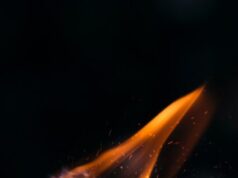Credit: Michigan State University
Research conducted at the National Superconducting Cyclotron Laboratory (NSCL) at Michigan State University has shed new light on the structure of the nucleus, that tiny congregation of protons and neutrons found at the core of every atom.
Headed by a French research group, the work, detailed in the latest edition of the journal Nature Physics, found that the distribution of the protons in a nucleus known as silicon-34 has a bubble-like center, something scientists had suspected for some time, but hadn’t been able to prove.
“The finding is somewhat unexpected,” said Alexandra Gade, chief scientist at MSU’s NSCL, where the work took place. “We’ve confirmed something that has been suspected for about 40 years but hadn’t been observed. This result furthers our understanding of how the nucleus is put together.”
Usually, the protons and neutrons that make up a nucleus are distributed evenly throughout. So the scientists, as well as the scientific world, took notice when this central depletion of protons was discovered.
“What made the work so challenging is the silicon-34 nucleus is an unstable, radioactive isotope, which has a lifetime of just under three seconds,” said Daniel Bazin, a member of the team and an NSCL researcher.
“These nuclei are difficult to make and there are only a few facilities in the world that can produce them and use them in experiments,” Gade said. “In North America, the NSCL is the only facility that could have done this experiment.”
Find your dream job in the space industry. Check our Space Job Board »
Source: Michigan State University
Journal Reference:
A. Mutschler et al. A proton density bubble in the doubly magic 34Si nucleus, Nature Physics (2016). DOI: 10.1038/nphys3916











